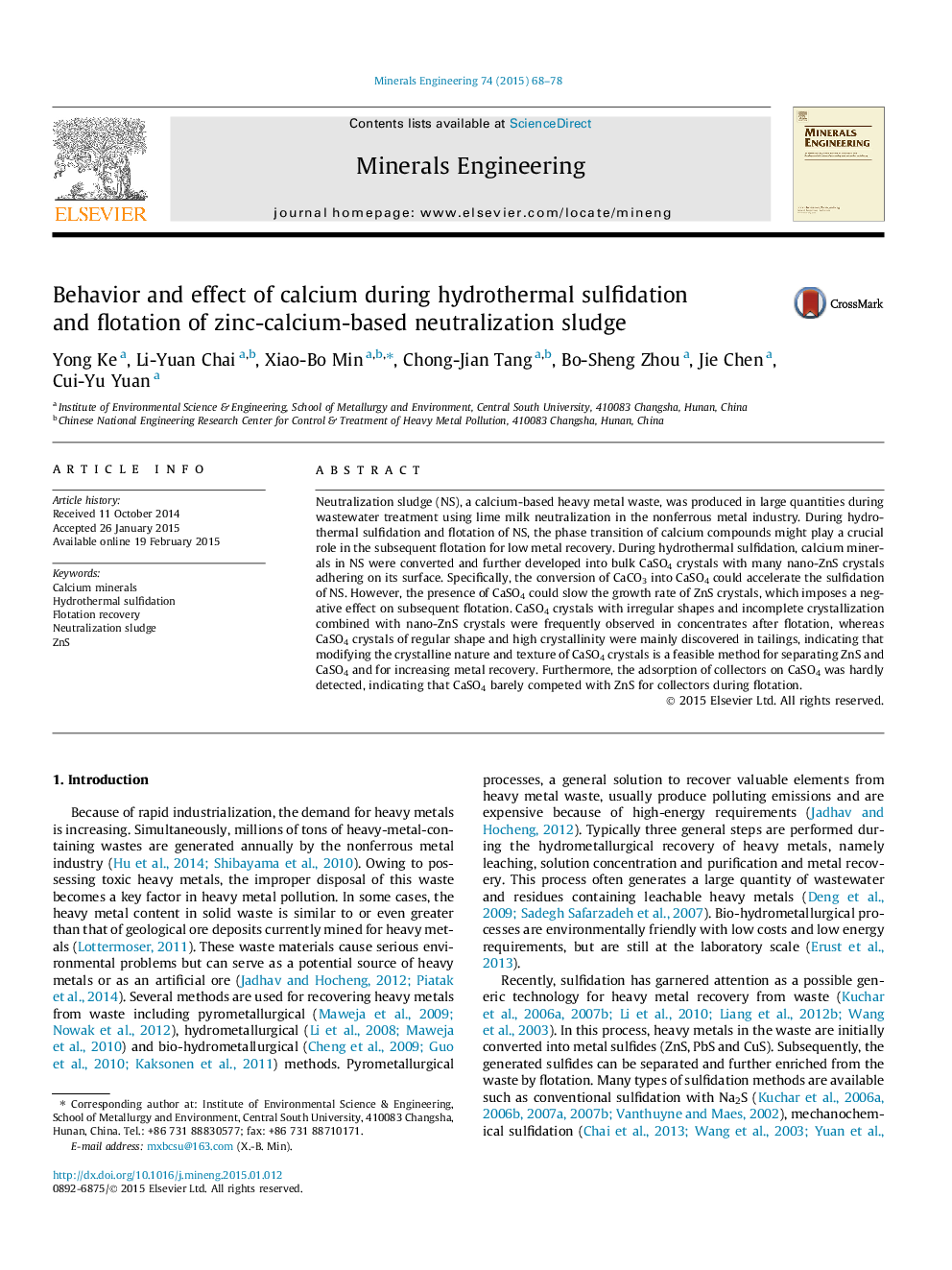| Article ID | Journal | Published Year | Pages | File Type |
|---|---|---|---|---|
| 233066 | Minerals Engineering | 2015 | 11 Pages |
•The phase transition and occurrence state of calcium minerals affects metal recovery.•The conversion of CaCO3 into CaSO4 promotes sulfidation of neutralization sludge.•The presence of CaSO4 can slow the growth rate of ZnS crystals.•Modification of CaSO4 crystals might be a feasible method for separating ZnS.•CaSO4 barely competes with ZnS for collectors during flotation.
Neutralization sludge (NS), a calcium-based heavy metal waste, was produced in large quantities during wastewater treatment using lime milk neutralization in the nonferrous metal industry. During hydrothermal sulfidation and flotation of NS, the phase transition of calcium compounds might play a crucial role in the subsequent flotation for low metal recovery. During hydrothermal sulfidation, calcium minerals in NS were converted and further developed into bulk CaSO4 crystals with many nano-ZnS crystals adhering on its surface. Specifically, the conversion of CaCO3 into CaSO4 could accelerate the sulfidation of NS. However, the presence of CaSO4 could slow the growth rate of ZnS crystals, which imposes a negative effect on subsequent flotation. CaSO4 crystals with irregular shapes and incomplete crystallization combined with nano-ZnS crystals were frequently observed in concentrates after flotation, whereas CaSO4 crystals of regular shape and high crystallinity were mainly discovered in tailings, indicating that modifying the crystalline nature and texture of CaSO4 crystals is a feasible method for separating ZnS and CaSO4 and for increasing metal recovery. Furthermore, the adsorption of collectors on CaSO4 was hardly detected, indicating that CaSO4 barely competed with ZnS for collectors during flotation.
Graphical abstractFigure optionsDownload full-size imageDownload as PowerPoint slide
